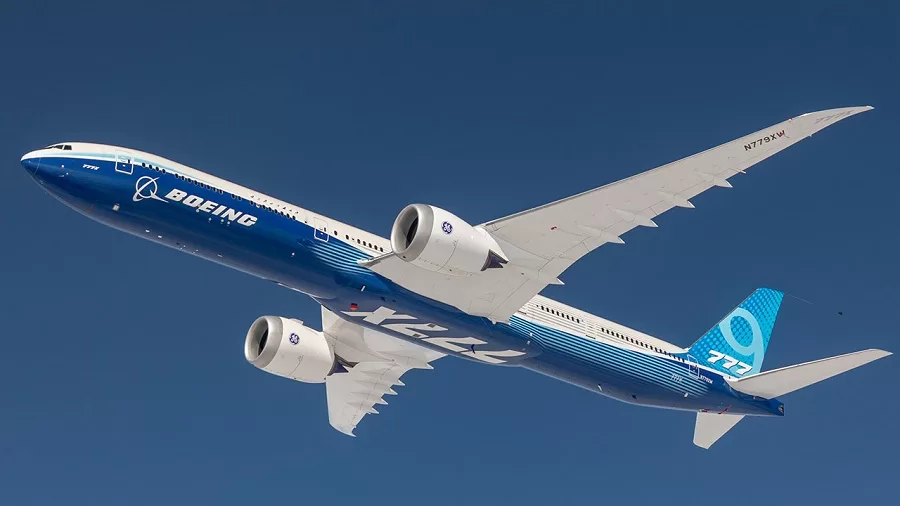Travel
Boeing’s $1 Billion China Challenge: Trade Trouble and a Global Rethink

- $1 billion in aircraft grounded: Boeing has approximately 50 aircraft, valued at over $1 billion, undelivered due to Chinese tariffs, including returned jets from major airlines like Xiamen.
- Global pivot in motion: With 70% of deliveries now outside the U.S. and a $545 billion order backlog, Boeing is shifting toward India and Southeast Asia to offset the China freeze.
What’s Behind Boeing’s $1 Billion Problem in China?
In early 2025, Boeing found itself grounded in a market that once helped fuel its growth. Nearly 50 aircraft—most of them 737 MAX jets—were due to be delivered to Chinese airlines. Instead, they’re parked in storage hangars in the U.S., waiting for new homes.
The value of these jets tops $1 billion.
The issue stems from a sharp escalation in trade tensions between the U.S. and China. The U.S. introduced a 145% tariff on a broad range of Chinese imports. In response, China hit American aircraft with a 125% tariff.
For Chinese carriers, this made Boeing’s planes too costly to accept. Xiamen Airlines even returned a freshly delivered jet to the U.S., citing the excessive import cost. Other airlines have since paused their orders.
This breakdown in deliveries is Boeing’s largest commercial freeze in China since the early 2000s.
Why China Has Always Mattered to Boeing
China has long been one of Boeing’s most valuable markets. The country is projected to need over 8,000 new aircraft by 2040, making it a top priority for all major aircraft manufacturers.
For Boeing, China was not just a sales market—it was a strategic partner. Aircraft were sometimes assembled with Chinese components. Production facilities and supply chain dependencies linked the two countries.
Between 2010 and 2018, Chinese airlines placed consistent large-scale orders. During that period, Boeing delivered more than 1,000 planes to Chinese customers.
Losing this pipeline—even temporarily—creates a hole not easily filled.
How Boeing Is Responding
Boeing is now working to mitigate the impact of these halted orders through several steps:
Redirecting Aircraft to New Buyers
The company is actively rerouting aircraft originally designated for China to other buyers. Air India has shown interest in taking on some of the stranded planes, and negotiations are ongoing. Other regional carriers in Southeast Asia and the Middle East are also exploring the opportunity.
By opening new conversations with fast-growing markets, Boeing is aiming to reallocate assets and avoid a prolonged inventory backlog.
Adjusting Production and Delivery Timelines
While Boeing hasn’t halted production of the 737 MAX, it has adjusted output rates. Factories are building aircraft based on confirmed international orders while holding off on those tied to disputed contracts.
This shift helps Boeing avoid stockpiling completed jets and allows it to remain flexible as market conditions evolve.
Working with U.S. Officials
Boeing has also stepped up its engagement with the U.S. government. Executives are lobbying for a clearer and more stable trade framework, especially around high-value manufacturing exports.
While Boeing doesn’t control trade policy, its influence in Washington is significant. Company leaders are calling for targeted negotiations to resolve the aircraft-specific dispute.
Key Numbers Behind the Disruption
The numbers around Boeing’s China setback reveal the scale of the challenge. At the centre of the issue are 50 aircraft, primarily 737 MAX jets, built for Chinese airlines but now undelivered. These aircraft represent over $1 billion in revenue that Boeing cannot currently realise.
The trade environment triggering this disruption involves a 145% U.S. tariff on certain Chinese imports, matched by a 125% Chinese tariff on U.S.-made planes. These added costs have made it financially unviable for Chinese carriers to proceed with Boeing orders, leading to paused deliveries and, in at least one case, a returned aircraft.
Despite these headwinds, Boeing reported improved Q1 2025 performance. The company posted $19.5 billion in revenue, reflecting an 18% increase compared to the same quarter in 2024. The company also holds a substantial $545 billion order backlog, with many aircraft still scheduled for delivery to international markets.
Crucially, 70% of Boeing’s aircraft deliveries now go to customers outside the United States. This shift shows how the company has recalibrated its strategy, spreading risk across a more diverse geographic base while managing the fallout from the China freeze.
How Did We Get Here? A Brief Timeline
- 2022–2023: Boeing resumed 737 MAX deliveries after grounding and safety reviews. China was slow to restart purchases.
- 2024: U.S.–China trade tensions resurfaced, with new tariffs on tech, steel, and aviation sectors.
- Early 2025: Tariffs reach a high point, triggering delivery refusals from Chinese airlines.
- April 2025: Xiamen Airlines returns a 737 MAX to Boeing.
- April 2025: Boeing begins rerouting grounded jets to India and Southeast Asia.
The tension between commercial interests and political strategy has grown sharper each year. This moment is a culmination of years of unresolved economic friction.
Implications for the Global Aerospace Industry
Boeing’s China issue isn’t just a single-company problem. It signals a shift in how global aerospace companies will need to manage supply, demand, and diplomacy.
Market Diversification Becomes Central
While the Chinese market remains large, it is no longer predictable. Airbus has faced similar issues in past disputes, although it has retained more stability in recent years.
Companies are now doubling down on diversification. Markets like India, Indonesia, Vietnam, and Saudi Arabia are becoming priority territories for aircraft deals.
Supply Chain Strategies Are Under Review
Boeing’s dependence on Chinese suppliers for components, like wiring systems and certain cabin fittings, is under fresh scrutiny. Future supply chain planning may lean toward “friend-shoring” or moving operations to politically aligned economies.
That could mean new investments in countries like Mexico, Poland, and Vietnam.
Trade Policy Now Shapes Forecasting
Airlines and manufacturers are increasingly building trade risk into their demand forecasts. Political uncertainty can no longer be treated as temporary background noise—it’s becoming a defining variable.
If tariffs stick, they will permanently reshape global fleet planning.
What Comes Next for Boeing
In the short term, Boeing will continue to redirect aircraft and look for new buyers. Production will be kept flexible to match shifting demand. Sales teams are already focusing on contracts in the Asia-Pacific regions outside of China.
In the longer term, the company will monitor trade negotiations closely. While no formal talks have been announced, both U.S. and Chinese officials have left room for case-by-case revisions.
Whether Boeing regains full access to China shortly remains uncertain. What’s more likely is that any new deals will come with stricter terms, longer negotiation cycles, and increased financial scrutiny.
What to Watch
Several developments will signal how this situation evolves:
- Air India and other regional deals: If Boeing successfully reallocates aircraft, it will ease short-term financial pressure.
- Policy movement in Washington and Beijing: Any shift in tariff strategy could reopen the door to resumed trade.
- Competitor strategies: Airbus may use this moment to strengthen its ties with China and take market share.
Until then, Boeing’s course is clear: keep delivering, keep adjusting, and keep looking beyond traditional strongholds.


















































